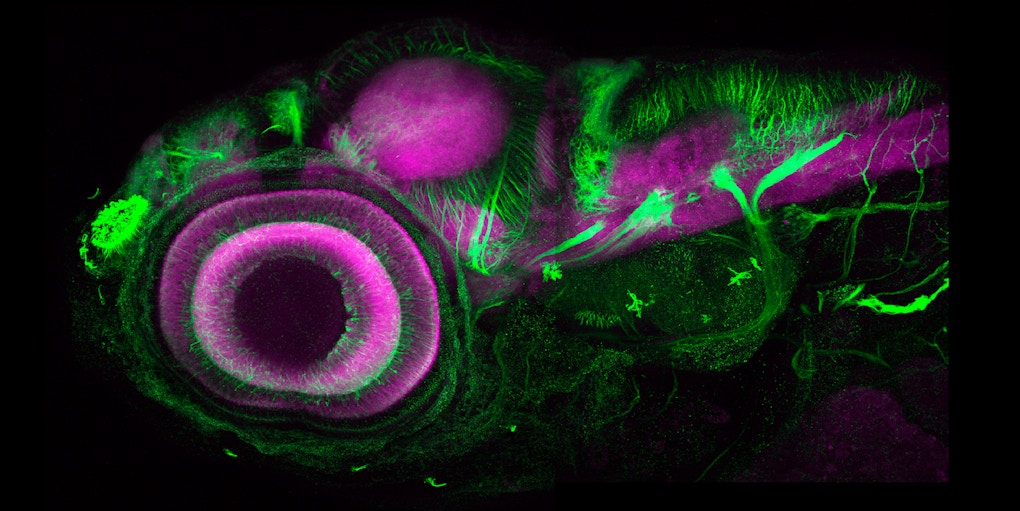
Zebrafish embryo. Image credit: Kate Turner & Tom Hawkins / wellcome collection. CC BY
SFARI announces that it is now curating a set of zebrafish lines to study autism spectrum disorder (ASD). These lines have mutations in zebrafish paralogs of 12 ASD risk genes; four lines are already available to researchers and eight will be available soon.
SFARI has facilitated the creation of diverse experimental systems, spanning from mouse and rat models to induced pluripotent stem cell (iPSC) models for ASD research. Zebrafish, which are genetically tractable, amenable to high-throughput phenotyping and transparent during development, will provide an additional experimental system for investigating the biological mechanisms by which ASD-linked mutations affect phenotype and for identifying potential therapeutic targets.
The zebrafish lines that are currently available harbor mutations in ARID1B, FMR1, MECP2 and PTEN, all high-confidence ASD risk genes. Lines for CHD8, CNTNAP2, DYRK1A, GRIN2B, NRXN1, SCN2A, SHANK3 and SYNGAP1 (some of which are being developed by SFARI Investigator Harold Burgess) will be available later this year. SFARI selected these genes based on the strength of the human genetic evidence supporting their role in ASD risk and the availability of other SFARI-supported experimental systems. More information about these zebrafish lines can be found here.
“We hope that focusing investigators’ efforts on zebrafish lines for which rodent models and human cohorts are available will allow for in-depth study at multiple levels of analysis and across multiple species,” says SFARI senior scientist Brigitta Gundersen.
Across all experimental systems, SFARI emphasizes construct validity over face validity. SFARI’s support was aimed at facilitating access to existing mutant lines and developing and/or validating new ones in which gene loss-of-function is validated by directly measuring mRNA as well as protein levels (in cases where antibodies are available) rather than by assessing phenotype. The necessity of strict validation measures was raised at a workshop on using zebrafish to study neurodevelopmental disorders that SFARI held in 2018, where it was argued that putative loss-of-function mutations that are genetically engineered in zebrafish may not in fact produce a complete loss-of-function of the targeted gene1. Some lines (i.e., FMR1, MECP2 and PTEN) already existed, while others have been validated and/or deposited upon SFARI’s request. Additional lines are being developed and validated de novo with SFARI support.
With these zebrafish resources, SFARI intends to provide ASD researchers with a robust experimental platform, while helping to reduce variability across labs using different mutant lines and/or genetic backgrounds.
“We hope that adding zebrafish to the SFARI resource portfolio will make autism research more diverse and address the many challenges voiced by the growing field of autism researchers using these systems,” says SFARI deputy scientific director John Spiro.
All zebrafish lines developed with SFARI support have been/will be created and validated by researchers worldwide and deposited in the Zebrafish International Resource Center (ZIRC). Interested investigators should contact ZIRC directly to obtain access.


